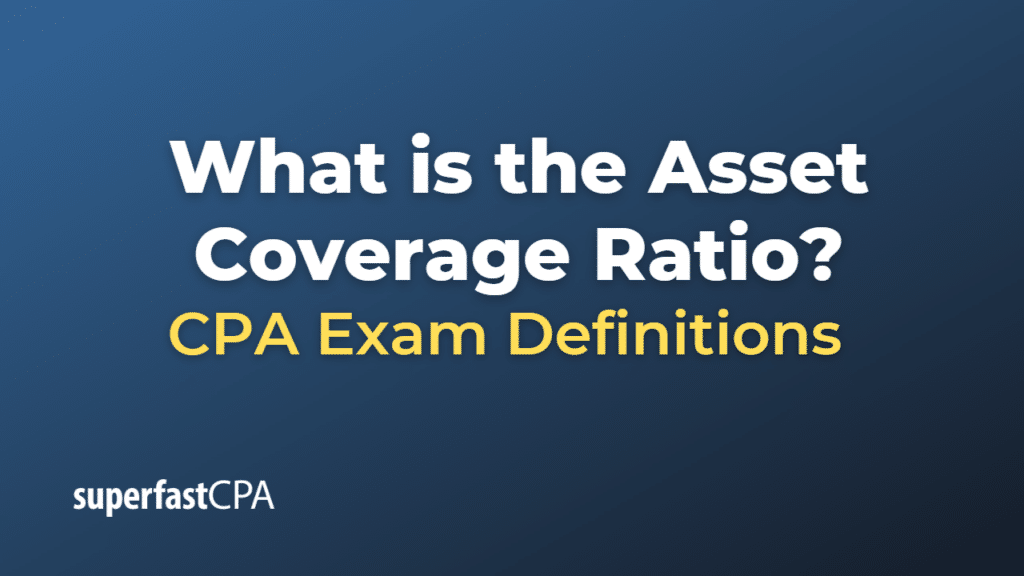Asset Coverage Ratio
The asset coverage ratio is a financial metric used to assess the ability of a company to cover its debt obligations with its assets, excluding its intangible assets. It is commonly used by analysts and investors to gauge the risk associated with a company’s debt and its potential for default, especially for firms that have significant amounts of debt.
The formula for the asset coverage ratio is:
\(\text{Asset Coverage Ratio} = \frac{\text{Total Assets − Intangible Assets − Current Liabilities}}{\text{Total Debt}} \)
Where:
- Total Assets include everything a company owns, both tangible and intangible.
- Intangible Assets might include items like patents, trademarks, copyrights, goodwill, and brand recognition.
- Current Liabilities are the company’s debts or obligations that are due within one year.
- Total Debt typically includes long-term debt, which could be bonds, long-term loans, or any other long-term financial obligations.
A higher asset coverage ratio indicates that a company is in a better position to cover its debt obligations using its assets. Conversely, a lower ratio suggests that a company might have difficulty covering its debt, which could lead to increased financial risk.
However, like all financial metrics, the asset coverage ratio should be used in conjunction with other financial ratios and metrics for a comprehensive view of a company’s financial health. The acceptable level for this ratio varies across industries, so it’s also essential to compare the ratio with industry peers.
Example of the Asset Coverage Ratio
Let’s walk through an example to illustrate how the asset coverage ratio is computed:
Scenario:
You are evaluating the financial stability of XYZ Corporation. The following financial data is available from their balance sheet:
- Total Assets: $1,000,000
- Intangible Assets: $200,000
- Current Liabilities: $150,000
- Total Long-Term Debt: $400,000
You want to calculate the asset coverage ratio to determine how well the company can cover its debt obligations with its assets.
Given:
- Total Assets = $1,000,000
- Intangible Assets = $200,000
- Current Liabilities = $150,000
- Total Debt (Long-Term) = $400,000
Calculation:
Using the asset coverage ratio formula:
\(\text{Asset Coverage Ratio} = \frac{\text{Total Assets − Intangible Assets − Current Liabilities}}{\text{Total Debt}} \)
Plugging in the provided values:
\(\text{Asset Coverage Ratio} = \frac{1,000,000 − 200,000 − 150,000}{400,000} \)
\(\text{Asset Coverage Ratio} = \frac{650,000}{400,000} \)
\(\text{Asset Coverage Ratio} = 1.625 \)
Conclusion:
The asset coverage ratio for XYZ Corporation is 1.625. This means for every dollar of debt, XYZ Corporation has $1.625 in assets (after excluding intangible assets and deducting current liabilities) to cover it.
A ratio of 1.625 might be considered satisfactory in some industries, implying that the company has sufficient assets to cover its long-term debt. However, as always, this ratio should be compared against industry benchmarks and peer companies for a more informed evaluation.













